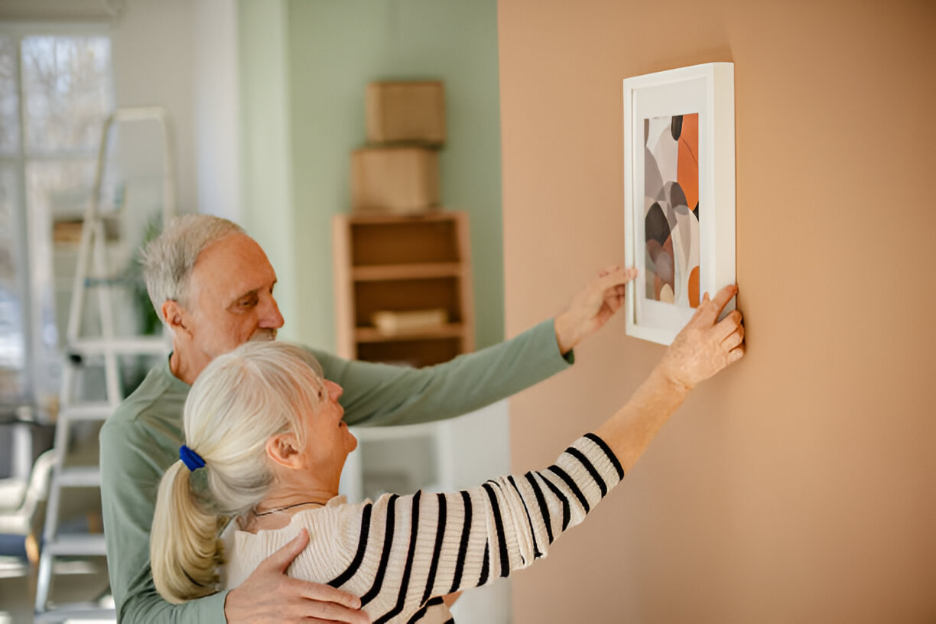How to Create a Safe Home Environment for Dementia Patients: A Step-by-Step Guide

Creating a secure, comfortable home for someone living with dementia is a critical step in ensuring their safety and preserving their independence for as long as possible. As dementia progresses, changes in memory, judgment, vision, and mobility can increase the risk of falls, wandering, confusion, and injury.
This guide is designed to help families—especially those using private dementia care—take a step-by-step approach to dementia proofing their homes with practical tools, environmental modifications, and behavior-based strategies.
Why Home Safety is Crucial in Dementia Care
People with dementia are more vulnerable to accidents due to cognitive decline and impaired judgment. A familiar yet unmodified home environment can become increasingly hazardous as symptoms progress.
Key safety challenges include:
- Wandering or getting lost
- Falls and tripping hazards
- Difficulty using appliances
- Forgetting to turn off the stove
- Inability to recognize danger (e.g., sharp tools or cleaning products)
Creating a dementia-friendly home is not about restricting freedom—it's about minimizing risks while supporting autonomy and dignity.
Start with a Home Safety Assessment
Before making changes, conduct a thorough home safety check. Walk through each area of the home from the perspective of someone living with dementia.
Look for:
- Loose rugs or cords that could cause tripping
- Poor lighting in hallways or stairwells
- Sharp objects or dangerous tools left in reach
- Medications or chemicals stored in unlocked cabinets
Families using private dementia care services may also benefit from a professional home assessment provided by care agencies or occupational therapists.
Focus on Key High-Risk Areas
While the entire home should be evaluated, some rooms pose more risk than others. Prioritize these areas for dementia proofing.
Kitchen Safety
- Install child-proof locks on cabinets containing knives, glassware, or cleaning products.
- Use automatic shut-off devices for appliances like ovens and irons.
- Store small appliances out of sight when not in use.
- Label drawers with pictures or words to help with orientation.
- Remove clutter from countertops to reduce confusion.
Bathroom Modifications
- Install grab bars near the toilet and in the shower or bathtub.
- Use non-slip mats inside and outside the tub.
- Consider a walk-in tub or a shower chair for safer bathing.
- Set the water heater to a safe maximum temperature (below 120°F) to prevent burns.
- Store medications in locked cabinets.
Bedroom Adjustments
- Use a night light or motion-sensor lighting to help with nighttime navigation.
- Remove throw rugs or tape them securely to the floor.
- Place a monitor in the room if overnight wandering is a concern.
- Keep clothing simple and accessible to reduce frustration during dressing.
Living Room and Common Areas
- Remove glass or sharp-edged furniture.
- Anchor bookshelves and TVs to prevent tipping.
- Eliminate clutter that can be confusing or dangerous.
- Avoid using extension cords across walking paths.
Prevent Wandering and Ensure Exit Safety
Wandering is one of the most concerning behaviors in dementia care. A person may walk away from home due to confusion, stress, or a desire to "go home" even when already there.
Wandering prevention strategies:
- Install door alarms or chimes to alert caregivers when doors open.
- Use child-proof locks or place latches above or below the line of sight.
- Consider motion sensors or GPS tracking devices for added security.
- Avoid triggering restlessness by limiting noise, clutter, and overstimulation.
- Display stop signs or “Do Not Enter” signs on doors leading outside.
Working with private dementia care providers can also help ensure supervision and reduce wandering risks, especially during high-risk times such as evening hours.
Introduce Assistive Devices for Safety and Independence
Assistive devices for the elderly can help reduce injury and support independent living. Choosing the right tools depends on the stage of dementia and individual needs.
Recommended assistive devices include:
- Grab bars and railings throughout the home
- Raised toilet seats
- Bed rails or fall mats
- Door knob covers and stove guards
- Pill dispensers with reminders
- Voice-activated lights or smart home systems
Smart technologies such as motion detectors, cameras, and wearable alarms can also provide peace of mind to caregivers and families.
Adapt the Environment to Reduce Confusion
Simplicity and clarity are key principles in dementia care environments. Too many objects, colors, or sounds can cause disorientation and frustration.
Practical adaptations:
- Use contrasting colors for walls and floors to help with depth perception.
- Label doors, drawers, and cabinets with both words and pictures.
- Keep daily essentials in plain sight but organized (e.g., glasses, toothbrush).
- Play familiar music in the background to reduce anxiety.
- Maintain a quiet, well-lit space with minimal visual noise.
These environmental modifications support cognitive function and reduce agitation, especially in patients prone to confusion or sundowning.
Provide Caregiver Training in Dementia Safety
Even the safest home cannot replace informed, attentive care. Proper caregiver training in dementia is essential to respond to safety risks, behavioral issues, and emergencies.
Key training topics for dementia caregivers:
- Understanding behavior triggers
- Non-verbal communication techniques
- Emergency response and fall prevention
- Managing wandering and exit-seeking
- Proper use of assistive devices
Families using private dementia care services should ensure that caregivers are well-trained and certified in dementia-specific safety protocols.
Review and Update Safety Measures Regularly
As dementia progresses, needs change. Regularly reassess your home safety plan to keep up with new challenges.
- Reevaluate fall risks every few months.
- Add new signage or devices as needed.
- Monitor behavior changes that may indicate a need for more supervision.
- Stay in close communication with private care providers to adapt care plans.
A proactive approach ensures your loved one remains as safe and comfortable as possible over time.
Conclusion
Creating a safe home environment for a dementia patient involves more than just physical adjustments—it's about building a space where they can continue to live with dignity, comfort, and as much independence as possible. By conducting detailed home safety checks, introducing assistive devices, preventing wandering, and ensuring proper caregiver training, families can dramatically reduce the risks associated with dementia at home.
Whether you're caring for a loved one yourself or working with private dementia care professionals, this step-by-step guide provides a foundation for making thoughtful, informed safety decisions.
Dementia-proofing your home is not a one-time task—it’s an evolving process that grows alongside your loved one’s needs. With preparation, patience, and support, home can remain a safe and familiar place for as long as possible.
Need help dementia-proofing your home or setting up a safer space for your loved one? Contact us today to learn how our experts can guide you through creating a safe home environment for dementia care."
Frequently Asked Questions (FAQs)
1. What is the first step in making a home safe for someone with dementia?
The first step is conducting a comprehensive home safety assessment. Identify potential hazards in each room and prioritize high-risk areas like the kitchen, bathroom, and entryways.
2. How can I prevent a person with dementia from wandering out of the house?
Install door alarms, use child-proof locks, and consider motion sensors or GPS tracking devices. Keeping the individual engaged and minimizing stress can also reduce the likelihood of wandering.
3. Are there smart home technologies that help with dementia care?
Yes. Smart lighting, voice-activated devices, automatic shut-off appliances, and fall detection systems can all enhance safety and reduce caregiver burden.
4. What assistive devices are most helpful for dementia patients at home?
Commonly used devices include grab bars, non-slip mats, raised toilet seats, pill dispensers with alarms, and bed rails. The right tools depend on the individual’s physical and cognitive condition.
5. How often should I update my home safety plan for dementia care?
Reassess your home safety measures every few months or whenever there is a noticeable change in behavior, mobility, or cognitive function. Regular updates help ensure ongoing safety.


